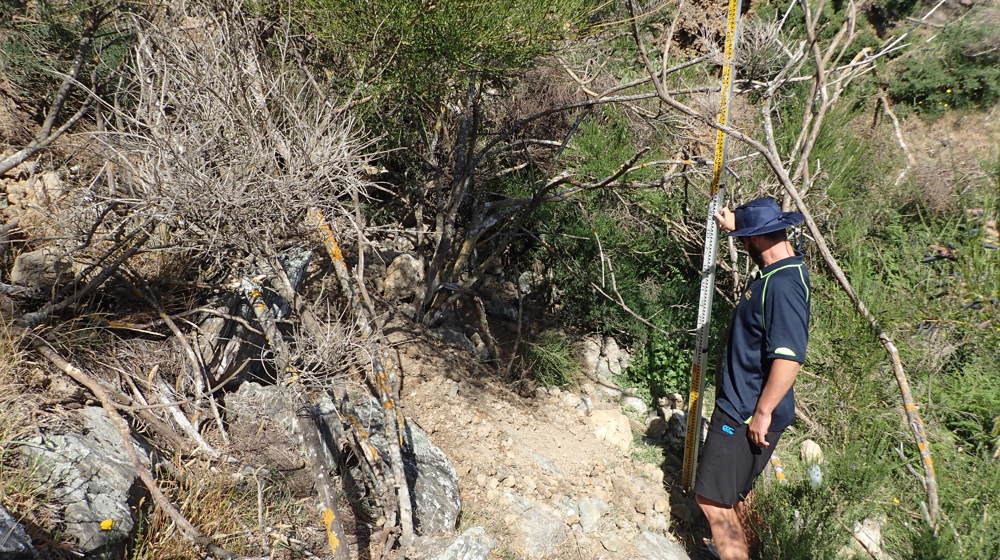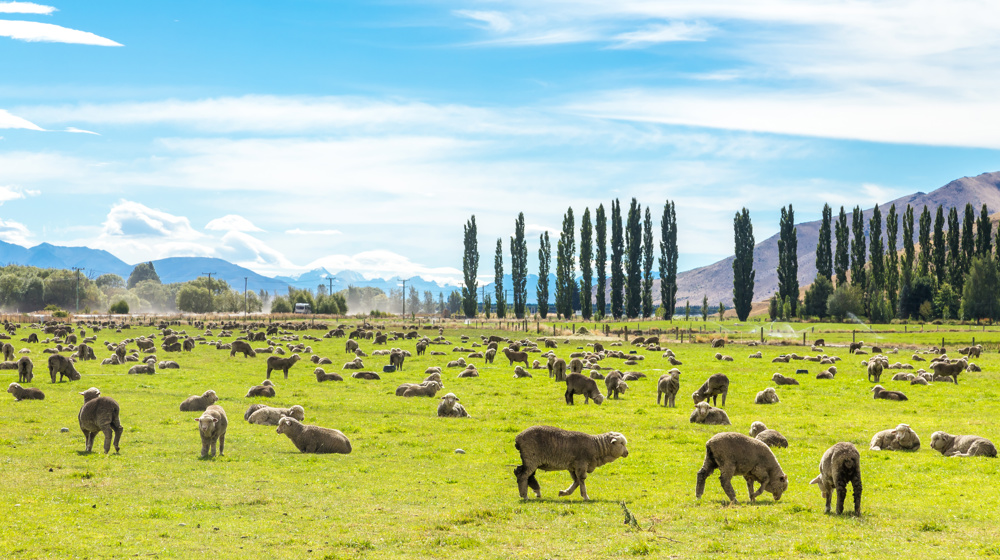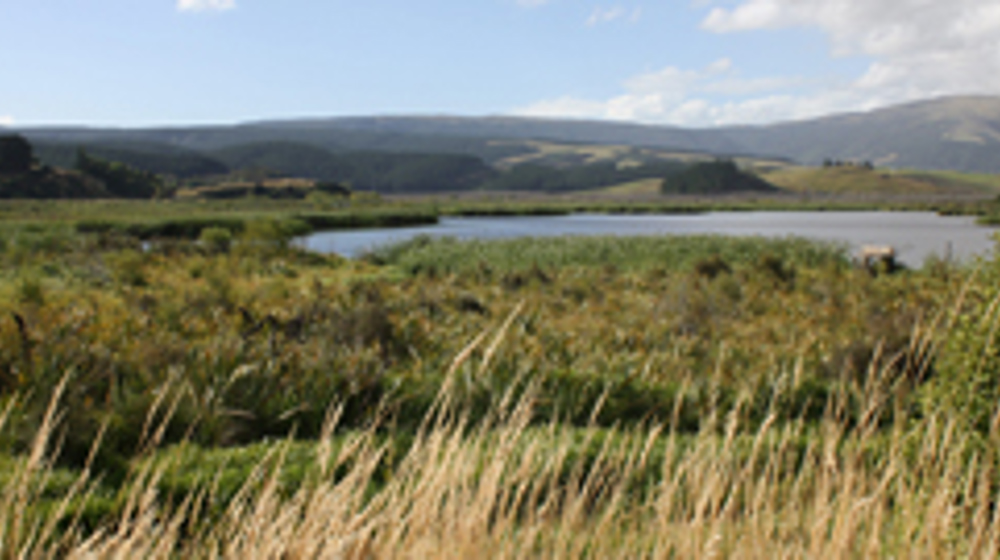-
-
-
-
-
-
-
-
-
-
-
-
-
-
-
-
-
-
Applying the land and water plan to your activity
-
-
-
-
-
-
-
-
-
-
-
-
-
The draft Plan for Otago is made up of proposed rules and policies for different activities, also known as 'chapters'. Please note the material on this web page about the new Land and Water Regional Plan (LWRP) has the status of draft.
The draft Plan is still being written and is yet to be completed and formally notified as the ‘proposed’ LWRP. The ‘proposed’ Plan will be available late 2024 when it is scheduled for ‘public notification’. On this web page, you will find information about the proposed rules that we are considering. We have received public feedback that let us know if people thought we were heading in the right direction before the ‘proposed’ LWRP is publicly notified.
The proposed new rules are designed to protect waterways for future generations.
If you are unsure of any particular terms in the below summaries, there is a glossary of terms.
No consent needed if the conditions are met: A permitted activity can be carried out without the need for a resource consent so long as it complies with any requirements, conditions and permissions specified in the plan. for example: If all of the conditions in PP-R6-PER 1 [Offal Pits) are met then you can use land for an offal pit without needing consent
Consent always granted and conditions are restricted: A controlled activity requires a resource consent before it can be carried out. The council can impose conditions on the consent, but only for those matters over which the council has reserved control. For example: It is a controlled activity to use land for drilling for the construction of a bore - a consent has to be applied for but must be granted
Not allowed: A prohibited activity may not be carried out. In addition, no resource consent can be sought or granted to authorise the activity. For example: It is prohibited to take and use surface water from a natural lake unless it is permitted or provided for by other rules. This means the activity cannot be undertaken.
Consent needed and conditions are restricted: A restricted discretionary activity requires a resource consent before it can be carried out. The consent authority can exercise discretion as to whether or not to grant consent, and to impose conditions, but only in respect of those matters over which it has restricted its discretion in the plan or over which discretion is restricted in national environmental standards or other regulations. For example: A consent is required to discharge biosolids onto land. The Council will restrict its discretion to the matters listed in the rule WW-R2-RDIS2
Consent needed and conditions are not restricted: A discretionary activity requires a resource consent before it can be carried out. The consent authority can exercise full discretion as to whether or not to grant consent and as to what conditions to impose on the consent if granted. For example: If permitted activity rules cannot be met, then it is a discretionary activity to discharge wastewater or sewage from an on-site wastewater treatment system onto or into land. A consent is needed and the full environmental effects of the activity can be considered.
Consent needed and conditions are not restricted: A non-complying activity requires a resource consent before it can be carried out. A resource consent can be granted for a non-complying activity, but first the applicant must establish that the adverse effects of the activity on the environment will be minor or that the activity will not be contrary to the objectives of the plan. For example: The discharge of water or sewage from a reticulated wastewater system to water is a non-complying activity. A consent is required to undertake the activity. To grant the consent, the adverse environmental effects of the activity must be minor or the activity must not be contrary to the relevant plan provisions
Consent needed and conditions are not restricted
We have:
- Identified key areas (Freshwater Management Units or FMU and rohe)
- Identified the values that apply to each FMU and rohe
- Set environmental outcomes for each value for each FMU and rohe
- Worked out how to measure progress toward those environmental outcomes by looking at various attributes like water cleanliness and natural habitat health.
Select the FMU or rohe you are interested in to view the proposed new rules for the specific area.
If you are unsure of any particular terms, there is a glossary of terms.
Please note: we are updating the material regularly to improve clarity.

Bed of Lakes and Rivers
Managing all works in, on, over or under the beds of lakes and rivers, including selected activities in the riparian margin (the strip of land that runs alongside a waterway)

Damming and Diversion
Managing dams, weirs, and diversions, including activities associated with their placement, maintenance, and removal

Earthworks and Drilling
Managing the disturbance of land and associated discharges (but not stormwater or discharges from contaminated land)

Environmental Flows and Limits (Water Quantity)
The Environmental Flows, Levels and Limits rules manage the setting of water quantity limits such as environmental flows and levels and take limits for all freshwater bodies in Otago, and all takes and uses of freshwater.

Other Discharges
Managing a range of specific discharges that do not neatly fit elsewhere. Discharges of contaminants and water into the environment (either directly to water or to land) can adversely affect the health of soils and water, as well as the health of the ecosystems they support.

Primary Production
Managing farming activities and practices that are likely to impact water quality, and the planting of forestry.

Stormwater Management
Managing discharges of stormwater: rainwater and meltwater runoff from surfaces such as roofs, driveways, carparks, and roads.

Threatened Species
Managing the effects of activities on the habitats of threatened species and applying the National Objectives Framework.

Solid Waste Management
Managing the disposal of certain types of solid waste to land in circumstances where it may enter water, including discharges from landfills, clean fill material and organic waste.

Wastewater Management
Managing discharges from the treatment of sewage, greywater, and industrial and trade waste

Wetlands
Managing activities in or near wetlands, working alongside the National Environmental Standard for Freshwater (NES-F), which includes controls on the removal of vegetation, earthworks, drainage, and discharges into natural inland wetlands, and the Resource Management (Stock Exclusion) Regulations 2020.

The Forestry Guide
Here are the rules that apply to plantation and permanent forestry activities, with information on when you might need a resource consent, useful links, relevant dates and answers to frequently asked questions.

Developer's Guide
Here are the rules that apply to development activities, with information on when you might need a resource consent, useful links, relevant dates and answers to frequently asked questions.

Te puka ārahi kaiahuwhenua Farmers Guide
Here are the rules that apply to farming activities, with information on when you might need a resource consent, useful links, relevant dates and answers to frequently asked questions.
The Integrated management and Land and Freshwater chapters provide the strategic direction for the draft LWRP and are relevant to the management of all activities under the plan. Both chapters contain objectives and policies but not rules.
The Integrated Management chapter focuses on:
- Giving effect to Te Mana o te Wai. Te Mana o te Wai is a concept that requires prioritising the health and well-being of water bodies and freshwater ecosystems in all decision-making, to restore and preserve the balance between the water, the wider environment, and the community.
- Managing resources (in an integrated way), recognising the interactions between different types of water bodies, and between water and land ki uta ki tai (from the mountains to the sea).
- Recognising that the management of land and water is part of New Zealand’s integrated response to climate change, including through renewable electricity generation.
- Managing uncertainty in decision-making under the LWRP in accordance with the National Policy Statement for Freshwater Management (NPSFM).
- Recognising the need for transitions in the use of resources over time and to manage the impacts of these transitions on communities.
- Setting out the relationships between different parts of the LWRP and giving direction on which provisions prevail in the event of conflict.
The Land and freshwater chapter focuses on:
- Achieving the long-term visions and environmental outcomes for Freshwater Management Units (FMUs) / rohe.
- Managing resources in a way that provides for:
-
- Mana whenua kaitiakitaka (Māori Environmental Management) and rakatirataka (leadership)
- The social, economic, and cultural well-being of Otago’s people and communities
- Nationally and regionally significant infrastructure, including renewable electricity
- Land use and development, including on highly productive land.
- Mana whenua kaitiakitaka (Māori Environmental Management) and rakatirataka (leadership)
- Protecting the values of outstanding water bodies and the natural character of all water bodies, including their form and function.
- Implementing mandatory direction set by the NPSFM on:
-
- Avoiding the loss of extent and values of rivers, lakes, and natural inland wetlands
- providing for passage of desired fish species and impeding passage for undesired fish species.
- Avoiding the loss of extent and values of rivers, lakes, and natural inland wetlands
- Requiring activities to use good environmental practice.
- Outlining the principles for avoiding and phasing out over-allocation, including:
-
- considering the needs of both present and future generations
- recognising the investment of existing uses and provision for new opportunities
- considering the needs of both present and future generations
- ensuring allocation and use of resources is efficient.
- Setting direction on managing discharges, including:
-
- preferring discharges to land over discharges to water
- requiring action to be taken to reduce the impact of the discharge
- ensuring consents for discharges assist with achieving FMU and rohe environmental outcomes.
- preferring discharges to land over discharges to water
- When setting consent terms, considering FMU or rohe timeframes and the need to implement any future changes to the plan.
- Recognising the national and regional benefits of renewable electricity generation, including by maintaining generation capacity and operational flexibility and allowing for ongoing maintenance and operation of schemes.
- Managing both new and existing activities in areas subject to natural hazard risk so that the level of risk is not increased.
The strategic direction in the draft LWRP is a significant shift from comparable direction in the Water Plan. The key issues with the current state, and drivers for change, include:
- The foundation of the operative Water Plan is out of step with the NPSFM
The objectives and policies of the Water Plan focus on ‘balancing’ resource use against protection of those resources, which has been replaced by the concept of Te Mana o te Wai and the hierarchy of obligations. This is a fundamental shift from the philosophy that underpinned the Water Plan when it was written.
- The operative Water Plan does not adequately provide for the integrated management of natural resources
The Water Plan focuses primarily on water and contains little direction on managing the land uses that contribute to freshwater issues, particularly for water quality and ecosystem health. There is also limited recognition of the relationships between fresh and coastal water, and ground and surface water.
- The operative Water Plan does not give effect to mandatory direction in the NPSFM
A suite of mandatory policies is required to be included in regional plans by the NPSFM. These apply to many different activities and therefore need to be part of the strategic direction of the plan.
- The operative Water Plan does not recognise the increasing impacts of climate change
The Water Plan does not specifically address climate change or the future impacts on water availability in some parts of the region. This will be increasingly important for decision-making over the life of the plan.
- The operative Water Plan does not adequately address Kāi Tahu cultural values and interests
The well-being of mahika kai (food and resource gathering) and taoka (treasures), and protection of other cultural values is rarely given effect to in environmental policy or decision-making processes under the operative Water Plan and these considerations are often compromised in favour of other values, including economic values.
